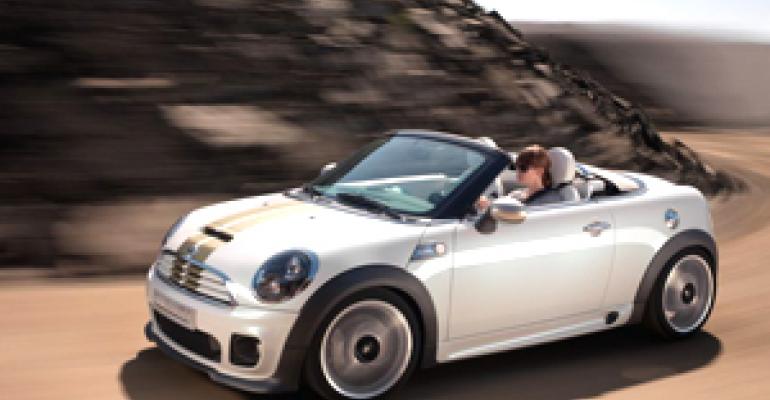
LOS ANGELES – Mini’s growth in the U.S, where it was introduced in 2002 with the Cooper and Cooper S Hardtop, up to now largely has hinged on the continuous introduction of derivatives of existing models.
To some, it would seem the brand has left no stone unturned with a convertible version of the Hardtop, followed by the Clubman, Countryman and now the new 2-seat Coupe and upcoming Roadster.

But there are new segments still to be explored, Vinnie Kung, Mini USA product-planning manager, tells WardsAuto in an interview here.
“There’s a lot of things we’re considering right now,” he says. “No matter what segment we would go into, we’d always be the smallest (size vehicle) in that segment.”
While future models will retain Mini’s basic design cues, they may diverge from the brand’s uniform look.
“What’s interesting is in the past few years a lot of manufacturers have done a lot of so-called ‘quasi-retro’ cars, redefining their own iconic concepts they stepped away from and came back to,” Kung says.
“There are many key design traits we’ll keep in all future products. But there’s got to be evolution. Not a complete revolution, but we do see a lot of opportunities on the exterior and in the interior.”
Mini likely will drive in new directions with vehicles based on the upcoming UKL platform it will share with parent BMW.
The B/C front-wheel-drive platform reportedly will underpin six to nine BMW and Mini models. Included in that group would be the next-generation Mini Cooper Hardtop, BMW X1 and possibly a production version of the tiny Mini Rocketman concept from the 2011 Geneva auto show.
“There’s a lot of synergy going on now between both brands using (UKL),” Kung says. “And this also means different variants off this platform (in terms of) wheelbase (and) track width, which gives us a lot of opportunity.”
Mini’s niche in the U.S. market is getting a bit crowded, Kung admits, with Daimler’s Smart and now Fiat entering the small-premium car group with its 500.
Kung says he is confident that Mini has the right recipe to fend off new challengers.
“Other competitors will follow our formula,” Kung says. “There’s a new competitor that’s come from Italy that’s followed many of our marketing, product-planning and pricing structures and modules we’ve done for 10 years now.
It doesn’t work for all brands, (but) it definitely works for us.
“I know they have some challenges,” he adds. “With their new high-performance versions, and I’m talking about the Fiat 500 Abarth, we can only hope they do well with it. But ultimately, it’s up to the customer to decide.”
While Fiat appears to be struggling, with sales falling below expectations this year, Mini’s U.S. deliveries jumped 22.1% to 47,050 through October, WardsAuto data shows. The auto maker may be able to top its highest volume in the U.S., achieved in 2008, with an additional 54,077 sales by year’s end.
Mini’s upcoming product launches include the Roadster in February, which is a convertible version of the just-on-sale Coupe, and a production version of the Paceman concept from the 2011 Detroit auto show, due about a year after the Roadster, Kung says.
Mini’s lineup is cross-shopped against a variety of models for fuel efficiency, size and performance, including the Toyota Prius, Ford Fiesta, Mazda3, BMW 3-Series and Porsche Boxster, Kung says.
The auto maker always is looking to expand its dealer base, and 2012 will be no different, he adds, noting Mini will add nine stores to its current 110 dealerships sometime between now and next year.
“We are all in the major metros, and now we’re moving to other areas,” he says. “The Midwest and West-Midwest are areas we’re looking at.”
However, any expansion of Mini’s U.S. retail footprint proceeds cautiously, Kung notes, as the brand’s dealers enjoy some of the highest per-store vehicle sales in the U.S. industry.
“We want to make sure all our dealers maintain the profitability they love to have by selling our cars,” he says. “Not just from the new-car side, but also the aftersales side.”





